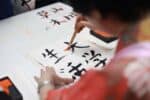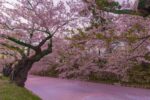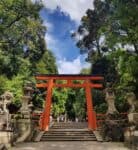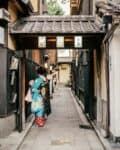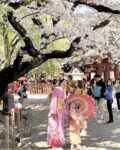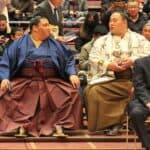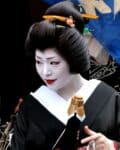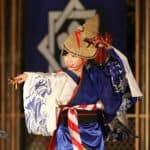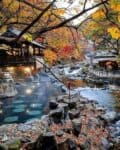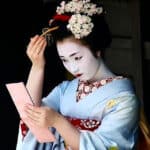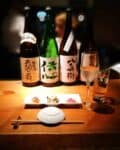Japan has a mystical and varied culture steeped in the deepest of traditions, going back thousands of years. The country is fascinating, with its roots firmly entrenched in the past; it also looks at new trends and technologies which it can embrace as future cultural norms. We take a closer Japanese culture and traditions.
Japanese culture is rich in values and heritage handed down for generations. It focuses on respect and dignity with a deep sense of honor. Arts, literature, and poetry are coveted and referred to as “living national treasures.” When you visit Japan, you can expect to be treated with dignity and politeness.
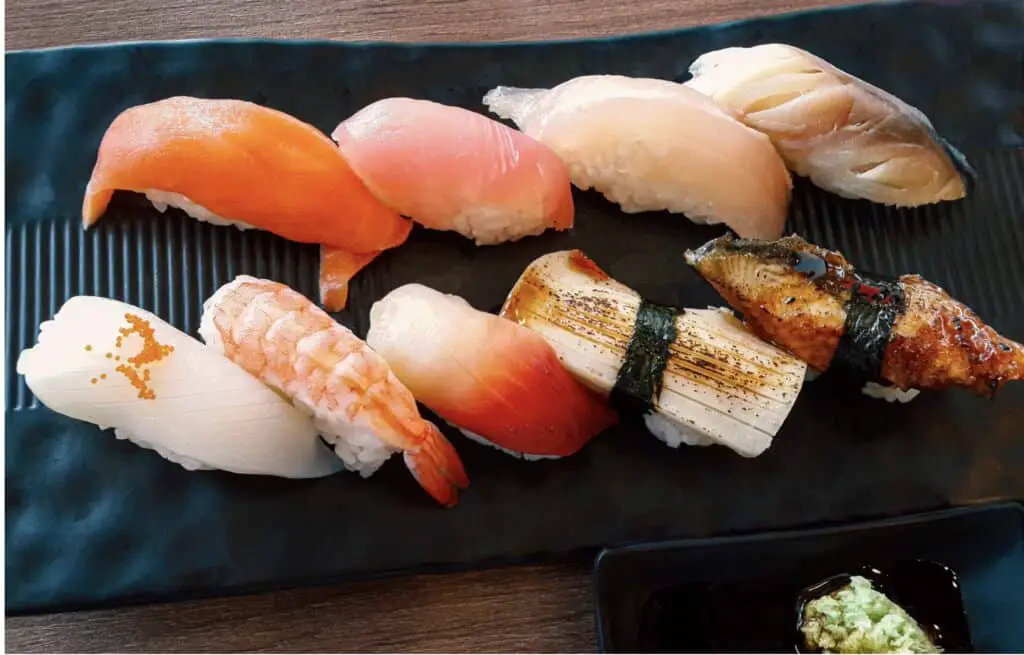

One of the most well-known aspects of Japanese culture is its cuisine. Japan has a wide variety of dishes, all with their own unique flavors and ingredients. Sushi, ramen, and tempura are just a few of the dishes that have become popular around the world.
Yakitori, a type of skewered chicken, is another popular dish in Japan. It can be found at izakayas, or Japanese pubs, and is often served with beer or sake. Here is an article about the best yakitori in NYC.
Japanese culture is also known for its traditional art forms. Ikebana, the art of flower arranging, and kokedama, a type of bonsai plant, are both examples of traditional Japanese arts that are still practiced today.
The nation boasts a colorful display of unique sculptures and paintings. Beautiful temples adorn many areas bringing an aura of peaceful contemplation.
Traditional activities such as the tea ceremony and ancient puppet theatre are a couple of wonderful traditions you can enjoy in Japan.
Social Conventions
Proper manners and customs are important in many facets of Japanese life. There are many aspects of this complex culture that tourists might not know, but some things will be easier to understand than others.
One of the most obvious social conventions is the traditional bow. Everybody genuflects when they greet another person. Bowing is used when saying hello, farewell, sorry, or thank you. It is an action that speaks of respect, gratitude, remorse, and general greeting.
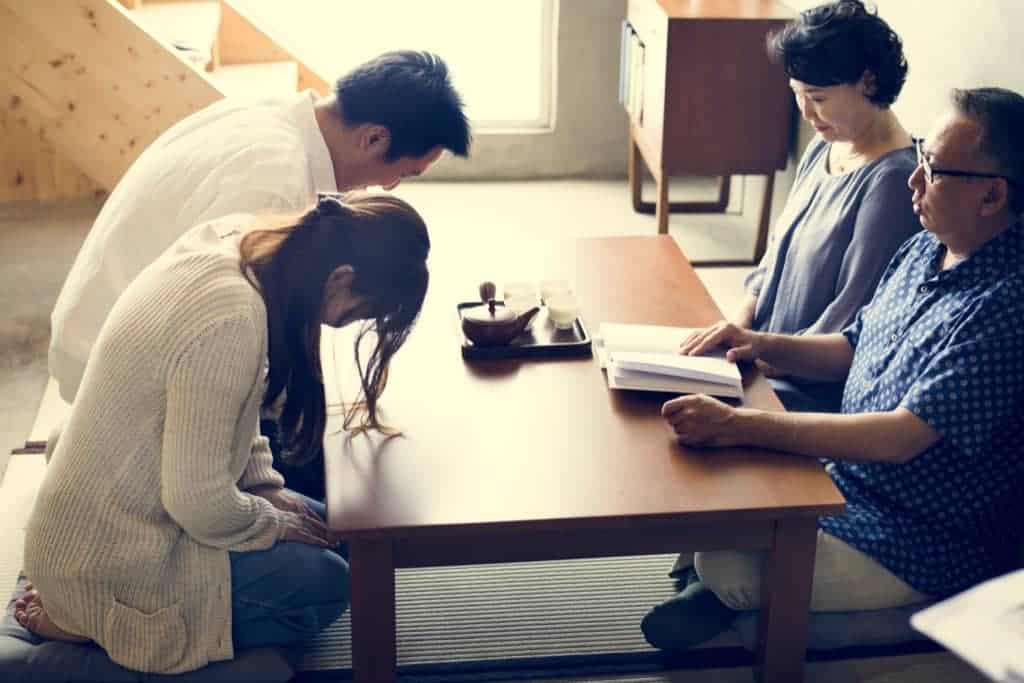
You don’t need to bow to everybody. If you are meeting somebody for the first time, you may wish to show respect in this way. However, when entering a shop or restaurant, you’re not expected to do so.
A casual head nod is an accepted sign of acknowledgment when giving thanks for your purchase or at the end of your meal. Many Japanese people use the head nod as a more casual everyday greeting.
You may have heard that it’s polite to remove your shoes when visiting someone at their home. However, it can be unclear whether you’re supposed to do so when visiting other buildings such as restaurants, temples, or shrines. It would be best if you looked out for some cues that will make it easier.
For example, if there are slippers set at the entrance, it’s clear that guests need to take off their shoes and put on the slippers. Another sign is a raised floor at the entrance, which indicates that visitors should take off their shoes in the doorway before stepping inside and onto the raised surface.
This practice originates from a practical viewpoint as people sleep, sit, and eat on the tatami mat floors. If you wear shoes inside, it may spread the dirt across the living area. Today people take off their shoes to keep the inside of the building clean and as a sign of respect to the host.
The Culture of Religion and Superstition
The religion in Japan is a wonderful mix of ideas from Buddhism and Shintoism. It’s rarely preached, nor is it considered a doctrine. Instead, it’s practiced as a way of living and a moral code that is almost indistinguishable from the Japanese social and cultural values. It is also considered private within family and friends.
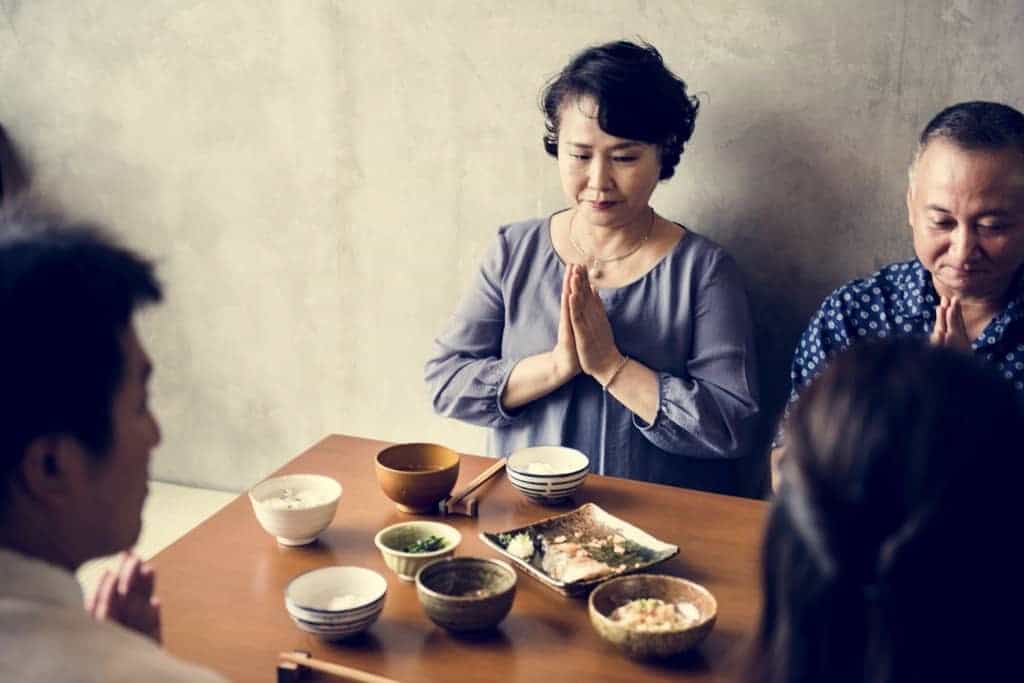
It is separate from the state, and you will not find any religious prayers or symbols at events like school graduation, for example. It is a very seldom discussed topic, and the Japanese people do not claim to be religious, nor do they go to worship regularly.
Shintoism is Japan’s primary spirituality and is based on the belief that every living thing in nature contains Gods (kami). You can see the Shinto principles throughout Japanese culture where nature and the seasons’ change are cherished.
Only 2% of Japan’s population is Christian, so holidays such as Christmas are a novelty. Beautiful Christmas lights displayed on Christmas trees are common, but the celebrations are held on Christmas eve rather than the next day.
However, even then, the evening is more of a date night akin to valentine’s day. Couples take the opportunity to go out for a fine meal and exchange romantic gifts.
The two main religions of Buddhism and Shintoism co-exist without any opposition. The main reason being is that Buddhism is concerned with the soul in the afterlife, while Shintoism is a spirituality of this world and this life. When people celebrate a birth or marriage or pray for good events to happen in Japanese culture, they will turn to Shintoism.
On the other hand, if a funeral needs to be conducted, it will be done as a Buddhist ceremony.
Are the Japanese People Superstitious?
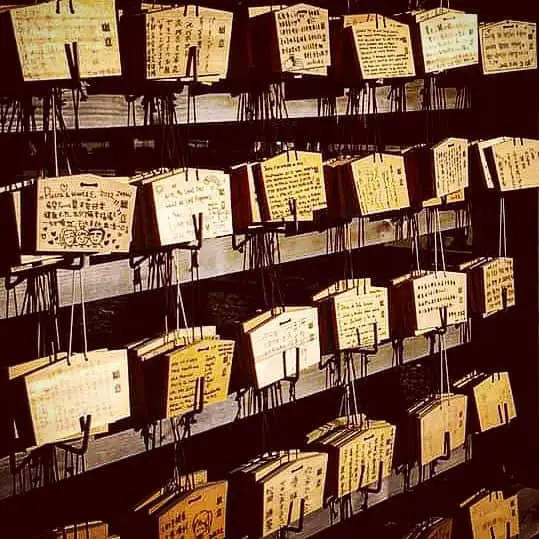
Fate, luck, and superstition are important cornerstones to Japanese culture. Many people buy small charms at the numerous temples or shrines, which are then attached to keychains, mobile phones, handbags, or even hung in cars to bring good luck.
Each item attracts different luck, such as exam success or financial abundance. I’ve noticed that prayers are often written on wooden planks called Ema. People hang them in their hundreds around the temple grounds.
You’ll see that these tablets are written in various languages and then left at famous temples such as Kyoto’s Kiyomizu-Dera. If you would like to know your destiny, you can take a fortune slip to find out how promising your future is.
Sometimes available in English, these slips give a rating for things to come in different areas of your life, such as success, love, or money. If you get a poor fortune, you can tie it to a tree branch within the temple grounds, as it’s believed that leaving the paper there should improve your luck.
Manga and Anime

These art forms were completely unknown to the outside world at one stage but are now a global phenomenon. The manga books are generally printed in black-and-white and cover various genres and topics relevant to both sexes and across all ages.
Some of the themes covered include science fiction or action-adventure. Still, you can also venture into a darker subject matter for mature readers, such as horror or more risqué material.
Manga makes up a large section of Japan’s publishing industry, and you’ll find the books everywhere, with people reading them during rush hour on the train or in their leisure time when they have time. Most Manga is aimed at children using simplistic styles and lovable characters feeding Japan’s love of anything Kawaii (cute).
The animated personas have huge eyes through which the artist can convey emotions more easily. Some of the most popular ones with global reach include Dragon Ball, Astro boy, and the more recent Death Note stories.
While Manga focuses on comic books and graphic novels, Anime is the name given to Japanese animation. A good example is Pokémon that was a worldwide hit as both a video game and television series. The obvious differences between the two include not only the color and movement but also the theme songs.
Many artists from the J-pop and J-rock world are vying to write the theme songs for the next big anime series. Many visitors to Japan only skim the surface of what the manga and anime productions can offer.
They appreciate the animation’s visual traits but do little research into the fantasy world. If they did, it would expand their knowledge of characters and better understand the Japanese people.
The Way of the Warrior
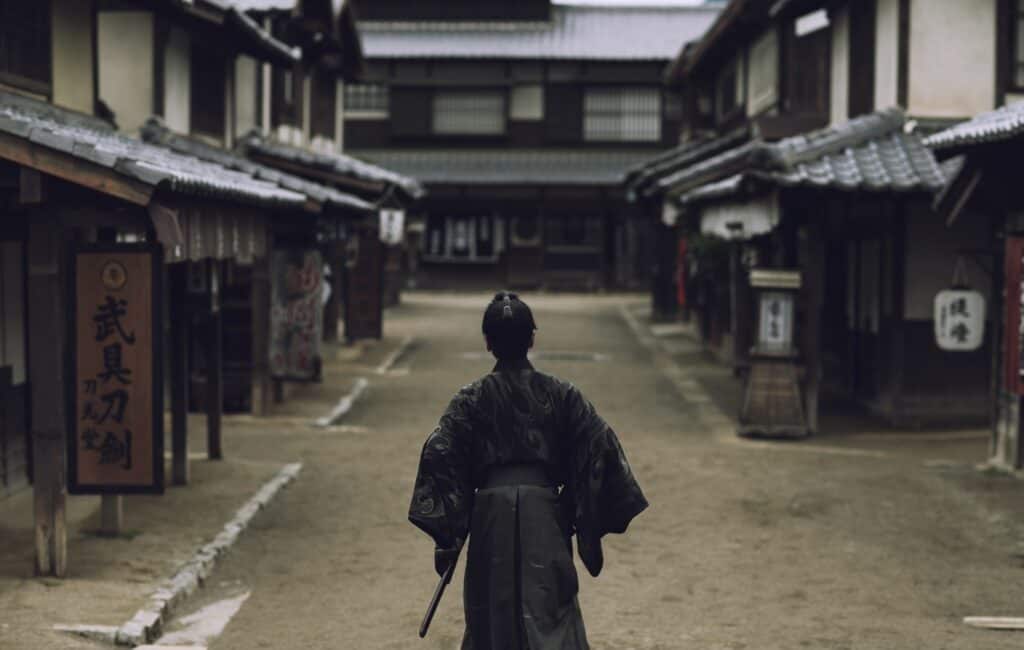
Bushido is the Samurai’s guiding philosophy encompassing character traits such as frugality, loyalty, mastery in martial arts, and honor unto death. If you’re interested in Japanese history, this military class’s role in shaping modern Japan is a fascinating one.
Although the traditional Samurai no longer exists, their influence still exists in Japanese culture and heritage, which can be seen all over Japan. You might notice it in a great castle, a well-preserved samurai house, or an intricate Japanese garden.
The traditions are deeply ingrained in the psyche of the people. The values of honor, selflessness, reckless bravery, and duty are still upheld by many of Japan’s people. Self-discipline and ethical behavior became the role model for other classes throughout the country’s history.
Not only were the Samurai amazing warriors, but they were also highly-cultured and literate. They also knew how to balance a life of fighting and learning. It is not easy to imagine some of those fighters enjoying activities such as the tea ceremony, calligraphy, poetry, and music.
Over the centuries, the Samurai shaped the leadership of the country. They influenced the classes with their high-literacy and education ideals, an ethos still followed by the Japanese people. Japan is very proud of its warriors, and the influences of the warrior’s way can be found all over the beautiful country.
To experience this culture, you can visit one of the great castles that bore witness to many bloody battles or experience one of the festivals with its origins in Samurai culture.
Their ideals have transcended throughout history, and understanding the heritage provides an interesting insight into today’s modern society, which emulates respect, discipline, and honor.
The Art of Traditional Theatre
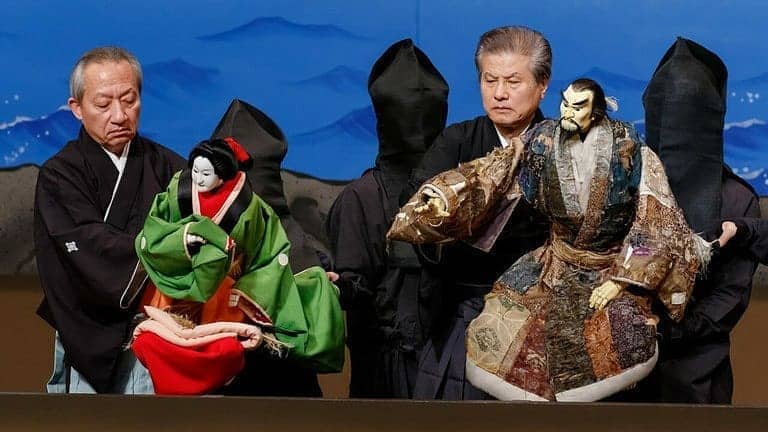
The unique and colorful theatre arts of Kabuki, Noh, and Bunraku puppetry are still performed throughout Japan today. You’ll be able to watch Kabuki, one of the three main traditional theatre genres, throughout most of the year. It began in the 17th century and involved a stylized type of acting popular ever since.
Men play all the parts, and some of its greatest actors specialize in portraying female characters better than anybody else. The stars of the shows are part of Japan’s celebrity culture, and you often see their faces on TV commercials, in magazines, and on billboards.
Another form of theatre is bunraku, which consists of puppets being manipulated by three puppeteers, originating in the 17th century. Shows often run in Osaka at the National bunraku theatre.
If you happen to visit, then you will be pleased to hear that earphone guides are available at each show. The third popular genre is Noh, a form of dance theatre with actors wearing wooden masks. It is the oldest form of theatre, and it traces back to the 14th century.
Japan had managed to preserve this traditional form of theatre, which might have vanished when the European styles started to show its influences in the mid-1800s. To prevent these traditions from being lost, the government split the two theatrical powerhouses.
It protected the heritage of Japanese theatre while allowing the modern versions to play out as well. It’s one of the world’s unique places where you can see 14th-century theatre one day, realistic theatre the next day, followed by 18th-century puppets, and finally, an spectacular dance show to complete the set.
What is a Geisha?
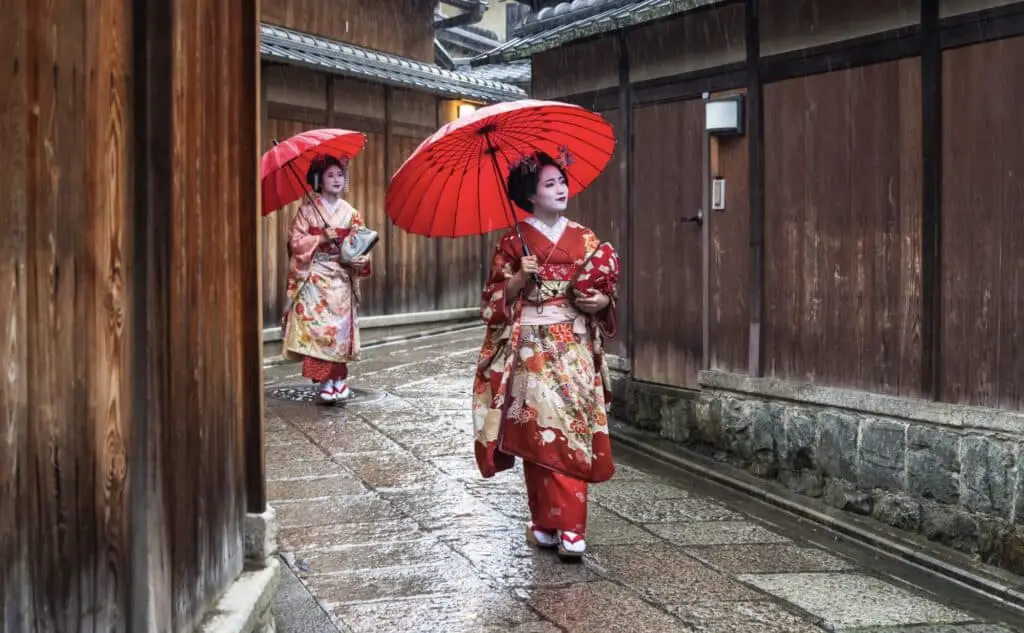
One of the most distinct and beautiful traditions of Japan is the esteemed geisha culture. Their primary role is to become the perfect hostess, with the ability to play music and dance. Geisha are also skilled in putting customers at ease by providing entertaining conversations and ensuring that any event flows smoothly.
Centuries ago, the first geisha were men, and only in the late 18th century did this start to change. You can distinguish them by their white-painted faces, crimson lips, and elaborate hairstyles. They portray a magical world that most of us will never experience.
A little-known fact is that for centuries tooth blackening was a common practice for married women and, in particular, geisha. Ohaguro, as it was known, was considered attractive and was believed to protect the teeth against decay. Women would apply various substances such as a mixture of tooth wax and ink.
Today, around four hundred geisha remain, living and working in the traditional tea houses as they always have been through the generations. The modern geisha starts life in the Kyoto Okiya (geisha house) around the age of 15. After learning skills in the traditional arts and hospitality, she will become an apprentice known as a maiko.
Origami
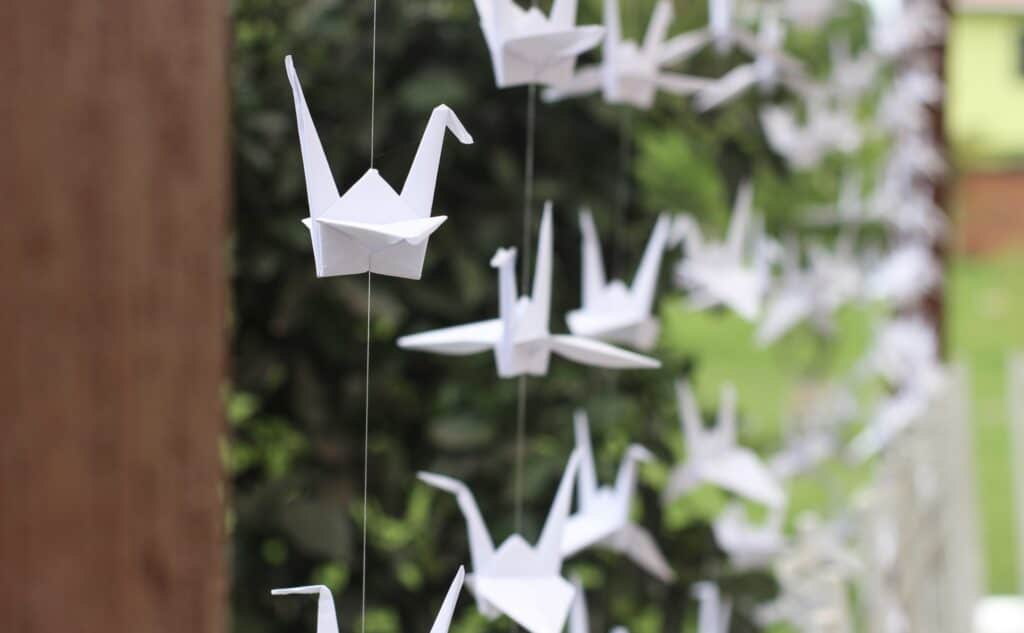
It’s difficult not to think of Japan when somebody mentions the word origami. It is integrated into Japanese life, along with sumo, sushi, and karaoke. The art of paper folding has evolved from simple ceremonial folds to creating extraordinary lifelike models that dazzle the mind.
“When you fold, the ritual and the act of creation is more important than the final result. When your hands are busy, your heart is serene” – Akira Yoshizawa, the grandfather of modern origami.
The belief is that it is a calming activity that encompasses the idea that your heart is at peace when your hands are busy. Many people use the art form as an effective way to improve well-being and practice mindfulness. It is slow and precise, and each fold is made with intent.
The process possesses a meditative quality. It requires focus and extreme patience to follow the steps of folding the origami paper and bring the character to life. It is an activity that’s been integrated into the Japanese culture and can aid relaxation, concentration, memory, as well as improve hand-eye coordination.
Although its exact origins are difficult to trace, it has often been assumed that China is credited with the invention of paper and may have been the birthplace of origami. The earliest reference to folded models was in the late 17th century.
The creation was called Ocho Meccho, which are male and female butterflies. These are historically important because they are the first known examples of representational origami. Closer to modern times, a gentleman named Akira Yoshizawa was born in 1911 and is considered the first true origami model making genius.
He published a book in 1954 called “new origami art,” which revolutionized the art by introducing a system of notation origami diagrams. It also included a huge number of new and highly realistic models of wildlife and insects.
Like so much Japanese culture, this beautiful activity has gradually seeped into the Western world and is still gaining popularity.
Japanese Gardens and the Tea Ceremony
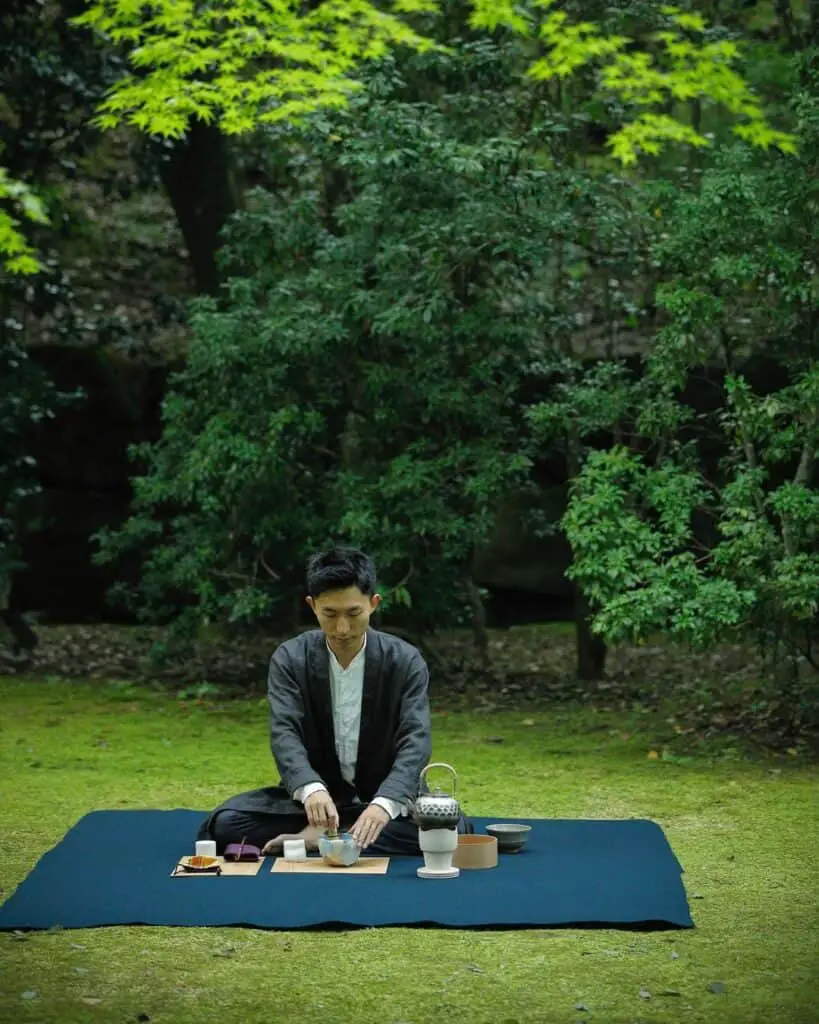
Traditionally gardens in Japan were solely created as religious depictions of various beliefs. It established a comfortable common ground with the Chinese Buddhists.
Every element of the garden would burst with significance. Pathways were designed to lead to enlightenment, while the soil represents the fertility and nurturing nature of Buddha.
However, it is not to say that Shintoism was pushed aside when Japan embraced some of the Buddhist ideas. The fusion of the two religions is clear in Japanese culture and is reflected in the Japanese gardens’ foundational design.
An important activity that takes place in the garden is the tea ceremony. The Japanese green tea ceremony is called Sado and translates to “the way of the tea.” It requires years of study to perfect and master.
It was introduced to Japan by a Buddhist monk from China who exposed the Japanese people to the “Zen” way of learning and the famous ceremony. It’s a ritual based preparation and presentation of a powdered green tea called matcha.
The Zen monks promoted the ceremony to such an extent that the ritual was embedded into Japan’s cultural fabric and has remained fundamental to the culture ever since. Gardens that are built for the sole purpose of holding tea ceremonies have a unique name – Chaniwa gardens.
It gives you an idea of how important the tea ceremony has become. As the tradition evolved, it gave rise to certain characteristics such as lanterns, steppingstones, and arch bridges, which are still considered iconic objects of the Japanese garden.
In more recent times, religious significance has been a little bit diluted. What was once space only for zen learning has changed to accommodate those who wish to use the area to enjoy a peaceful and meditative environment.
Beyond sushi
The Japanese people are among the most enthusiastic and passionate of any race when it comes to delicious food. They have a lot of respect for the process of cooking. Tourists visiting Japan should be aware that it is considered low-class behavior to eat or drink while walking.
When Japanese people buy food or drink on the street, they will consume the whole thing while standing at the spot to avoid walking with it. Don’t expect a couple of slices of bread and a piece of cheese because in Japan, food is an art form, and trained chefs prepare even the simplest dishes.
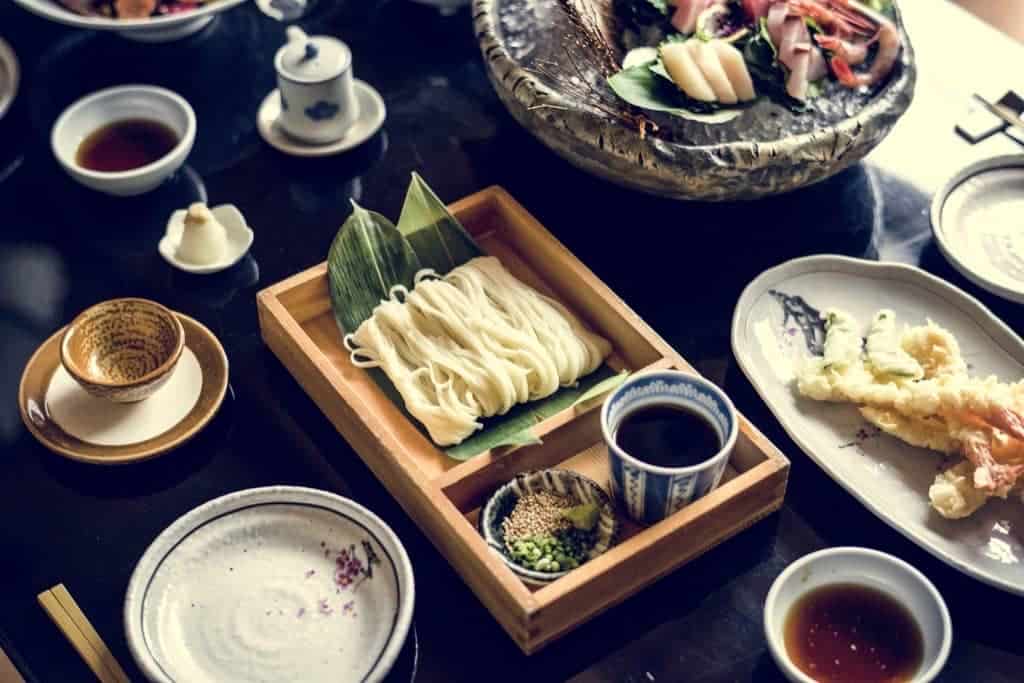
Many chefs have trained for years to get the crucial elements of Japanese cuisine right. Rice has been the staple food for the Japanese population for over 2,000 years and still forms the base of many meals. Rice is never wasted in Japan, and any leftovers are put to good use.
Besides sushi, you can enjoy several other popular dishes. Typical ingredients include fish, meat, or vegetables to accompany the rice for a main meal. The people are very proud of the four distinctive seasons, and each season offers different and delicious flavors.
There is such a diverse range of food available that even the local Japanese would struggle to name all of the varieties of seaweed, fish, and mushrooms found on the local shops’ shelves.
One of the most popular meals is Kaiseki Ryori. It consists of small dishes containing up to as many as 12 beautifully presented courses. These consist of:
- Steamed, grilled, or simmered dishes
- Sliced raw fish called sashimi
- Tempura
- Soup
- Pickles
- Rice
- A small dessert
Everything is seasonal, and you can enjoy four different offerings depending on the time of year.
Drinks
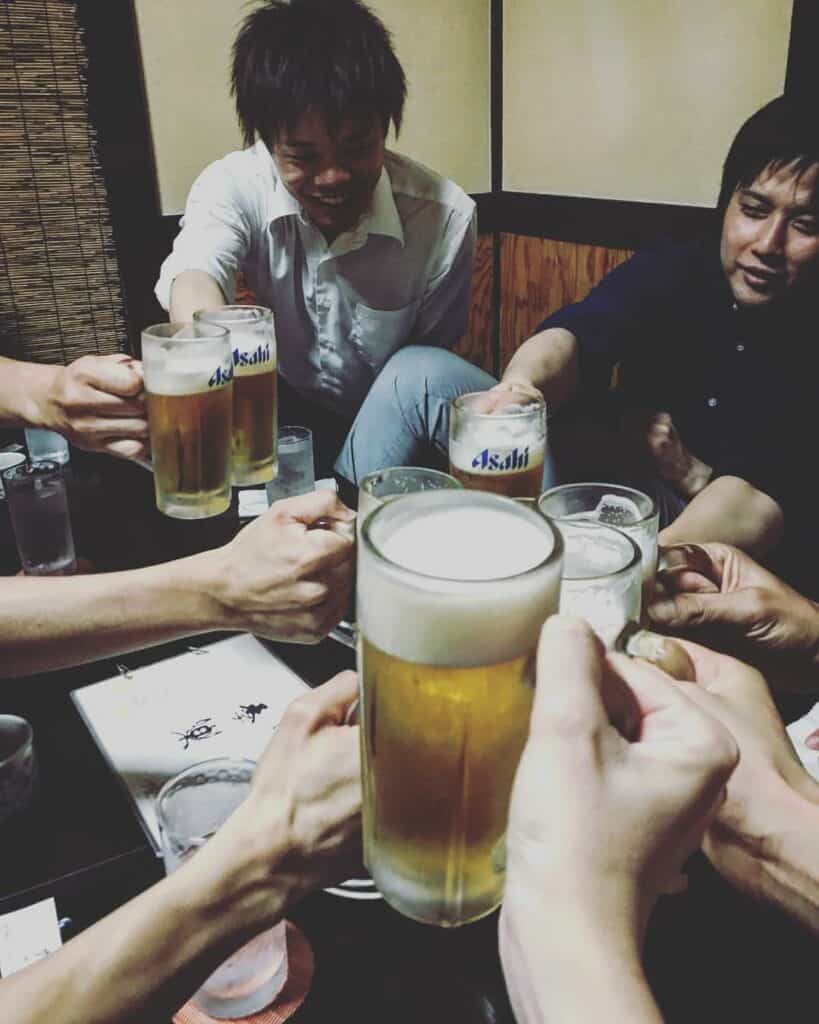
To wash down these delicious dishes, Japanese people enjoy a wide variety of beverages. The most famous drink is sake, which is rice wine, but the most popular in Japan is a lager-beer.
Then, of course, there are countless varieties of teas that everybody enjoys across the nation. They range from classic green teas to the more unusual buckwheat tea, barley tea, and brown rice tea. You will even find a powdered plum team.

